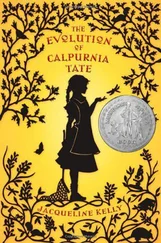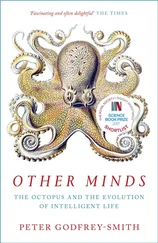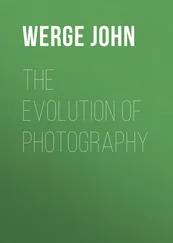Undoubtedly, for a long time, the peasant inhabitants of the valley must have lived a precarious life, perhaps keeping their homes on the higher sites that were less frequently flooded, while their fields were down in the flood plain itself. But eventually, possibly before 5000 B.C., a social organization capable of accumulating an economic surplus and able to direct its application to productive projects came into existence. The nature of this organization in the prehistoric period must be inferred from the evidence available about such an organization in the earliest historic period. At that later time, about 3000 B.C., in each city-state of Mesopotamia, the accumulation of economic surplus was in the hands of a distinctive social group, the Sumerian priesthood; it arose from their control, in the name of the gods they served, of a considerable part of the land of the community and of tributes levied, usually in kind, upon the produce of lands owned by others. The chief tasks of the priesthoods, at the later date, beyond their obvious religious functions, were the study of the stars and the keeping of the records of celestial observations.
From this evidence we might infer that, at some remote date, some unsung genius or, better, some observant family, saw a connection between the advent of the flood and the movements of the sun—two events that had not previously seemed connected. This individual or family noted that the rising sun appeared at a slightly different point on the horizon each morning, finally reaching a limit where it hesitated for a few days before it began to return. We would say that the position at which the sun rose moves 47 degrees of the full circle of the horizon over a period of some 180 days or more. Thus was born a rudimentary idea of the solar year, the full duration of the sun's movement back to its starting point. In time these observers noticed that the flood always came about the same number of days after the sun reached its most southern rising point. With this information the observer was able to estimate roughly the day on which the flood would arrive each year. This calculation the discoverers kept secret, for their own profit, using the knowledge to work on the fears and superstitions of their neighbors, trying to convince others that they possessed magical powers enabling them to foretell the arrival of the flood, or even the power to make it arrive. The original discoverers of this information could hardly have told the arrival of the flood within a span of time much less than ten days. However, the fear engendered by the flood was so great, increased by the realization that the crops would fail if it did not arrive, that some, at least, accepted the discoverers' claims and yielded to their demands for tribute. The discoverers probably offered to reveal the time of the flood in advance to those who would contribute a share of their crops, or perhaps they even threatened to bring the flood or to keep it away if they failed to obtain promises of tithes from the crops of their neighbors. However skeptical these neighbors might be of such claims the first year, no more than one lucky forecast was needed for most of them to become willing givers. After all, in such an important matter, it is safer to be on the right side. The ignorance of the majority made it easy for the possessors of this specialized knowledge to use it as proof that they had supernatural powers. Moreover, it was not necessary to convince a majority or even many of the neighbors. If any small number contributed, a surplus would accumulate which could be used, in the form of flood-protection embankments or irrigation ditches, to provide very concrete evidence that it was worthwhile to belong to the new organization. Thus came into existence the central institution of ancient Mesopotamia—the Sumerian priesthood.
This priesthood became a closed group, able to control enormous wealth and incomes, and concerned very largely with the study of the solar and astronomical periodicities on which their influence was originally based. With the surplus thus created, the priesthood was able to command human labor in large amounts and to direct this labor from the simple tillage of the peasant peoples to the diversified and specialized activities that constitute civilized living. Above all, this centralized direction provided the system of flood control and irrigation on which all subsequent progress was founded. Similarly, these priest-controlled surpluses provided the capital for the many inventions of the age of expansion of Mesopotamian civilization.
1. Mixture
Mesopotamian civilization began with a period of mixture, although this occurred at such an early date that we must, once again, work from inference. We have already mentioned the fact that the sexagesimal number system of Mesopotamia in the historic period must have arisen from a fusion of a decimal system and a duodecimal system, and possibly of a third element based on twenty. The widespread evidence for the very early duodecimal system, especially in the diffusion of the practice of dividing into twelve parts the wide band of fixed stars through which the sun passes in its annual revolution (the zodiac), and the association of this feature with painted pottery gardening would indicate that the duodecimal system was a characteristic of the Highland Zone neolithic peasant cultures. The decimal usage probably came from the Semite peoples within the Fertile Crescent. If a vigesimal system also entered into the mixture, it might have come from the south or southeast, for there seem to be, in the substrata of Mesopotamian culture, elements of tropical forest origin from this direction. Of course, these tropical forest elements, including the use of the dug-out canoe and of certain vegetally reproduced plants (especially the date palm), may have come into Mesopotamia somewhat earlier with the diffusion of those forest-dwelling traits that went to make up the European mesolithic cultures. The chief reason for attributing these elements to the period of mixture of Mesopotamian civilization is the very powerful one that no archaeological evidence for these elements or for any human habitation of the lower valley earlier than the Neolithic Garden occupation of the upper valley has been found. Yet the fact that Mesopotamia received tropical livestock like fowl and swine about the same time that it received the Highland Zone herd animals, as well as the fact that neither came from the Semites, makes it necessary to postulate a third element, of southern origin, in the Mesopotamian mixture. This element may have come by way of the mysterious civilization recently discovered by Danish archaeologists on Bahrein Island.
Additional evidence for early cultural mixture can be found in the confusion that existed, in the early historic period, between solar and lunar deities. Sometimes the sun was regarded as a male god, less frequently as a female goddess; it was usually symbolized by a disk or a many-pointed sunburst (star). Usually the moon was regarded as a female deity, but occasionally it was considered to be male; the usual moon symbol was a crescent, but sometimes it seems to have been symbolized as a complete circle (thus leading to confusion with the solar disk). This ambivalence of ideas on these two heavenly bodies seems to have arisen from a mixture of ideas from neolithic peasant and from pastoral Semite sources. It seems evident that early hunting people were patriarchal, regarded the male as more important than the female, and similarly considered the moon as more significant than the sun. The changes of the moon were more easily observed than any changes in the sun's position would be to hunting people (especially at low latitudes), and the use of the moon, rather than the sun, for hunting or fishing made it a much more significant object in their lives. Accordingly, almost all early hunting people told time by the moon, and many of them considered it to be a male, if not a deity; the sun would obviously be the moon's consort, and thus female.
Читать дальше










